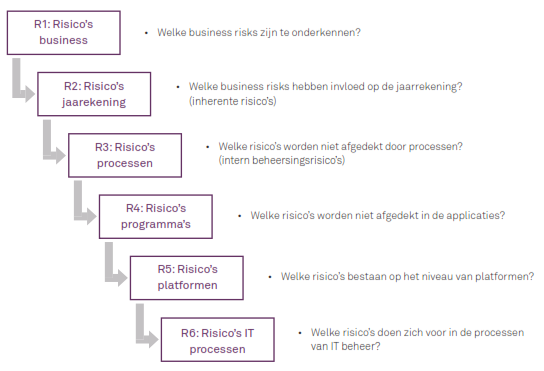Talking about robotisation of the accountancy industry…
- Automation is letting a computer do the same, or about the same, as was previously done by hand and/or mind.
- This ‘doing’ is a walk-through of an algorithm. In its simplest form, and for major parts the core of accountancy / bookkeeping processing, this was even parameter-free so no switches needed to be made, no decisions at switchpoints. But sometimes, the switchboard was external e.g., in accountancy rulebooks that were but for (idiot) savants (a.k.a. ‘only some accountants’) near- or completely impossible to stuff in one’s head as part of the programming.
- The Turing machines have it. But this line is only a display of wannabe Wisdom re core automation / programming knowledge.
- Computers were freely programmable. And still are, mostly. Robots? Maybe not so much. But then, they’re of the industrial kind welding together your Tesla, or of the ridiculously purposeless humanoid kind. So, why talk about robotisation when it’s more about automation (of the classical label), nowadays called ANI, in the cloud or not..?
- But then, there’s a lot of interpretation and shot calling and estimations up for discussion, in accountancyland. But that was what AI was supposed to solve! So far, we have only explored the either Expert System pure logic, or the ill understood neural networks deployment, but we haven’t integrated well enough the in-between (or supra) field of Fuzzy Logic. This could bring about a far more absolute truth of e.g., 60% admissibility of some estimation and at the same time a 60% inadmissibility of the same number. Then what — is determined by …? But that’s just how it is today, in the accounting industry, disguised as tough talk on admissibility but in reality styled more like cowardly firing squad pleading.
- I already blogged about continuous instant report generation based on approved XBRL templates, that could draw on All data available in some organization, to deliver reports with the latest data to just whomever has access to the template/generation engine.
- With assurance on the templates, and on the soundness of the base data pool generated/filled e.g. by automated verification against external sources, and on the integrity of the XBRL templates and the generation engine — nothing more needed. Initially, difficult enough, but learning effects will diminish the burden.
- A second intermezzo: Of course all assurance will be delivered to your smart watch (sideline: as if such a thing would ever exist). Just strap a tablet to your wrist and you’d still be out by quite some margin, on screen size required to quickly glance over all relevant data (in one view! as is almost always required to understand the displayed, to have information from the data).
- What if we find that all fuzzy logic including zero-to-somewhat fuzzyfied expert system’s translations of the hand- and rulebooks, would be implementable on rather simple neural networks, in the order of magnitude of a snail’s brain. No, not hinting at you, but the slime trail left by that Partner you know, is tell-tale.
- When not if, weaving errors turn up in the rulebook algorithmic… When not if, the translation of True And Fair View into materiality criteria (NOT the other way around..!!! as it would be today but also as is complete and utter stupidity of the sackable offense and life without parole magnitude) will turn out to be faulty.
- The idea that blockchain based trust will replace the value (if any(more)) of the wet signature — has that concept become sufficiently laughable ..? — of any particular person for reliance, is moot but may have to include indemnity / insurance coverage in one way or another, or is all accountancy (?) fee placed in escrow until a pool fund for expected claims is (over)filled?
- But, will blockchain trust not go the same way as reliance on open source software ..? Will it not fail in light of the Bystander Effect ..? Then, exploited by the worst, first. As usual.
Well, just some touch points. The main one being: The rules are algorithmic, almost by definition. Until now, there was no good automated engine to draw on, but the inroads Watson is making in the medical field (oh how comparable!), show how close we (well…) are to being outflanked by … Hey lets have a contest about the name this first Roboccountant will have …!
As long as we don’t fall for the trappings to believe in any kind of child’s hand is easily filled expectation of a humanoid robot but rather one that has no physical existence other than its bits spread out over the global infra.
Oh hey before letting you in the dust, to clear up, herewith:

[Not evil but Ibla]






![20141101_155144[1]](https://maverisk.nl/wp-content/uploads/20141101_1551441.jpg)
![20141101_160525[1]](https://maverisk.nl/wp-content/uploads/20141101_1605251.jpg)







